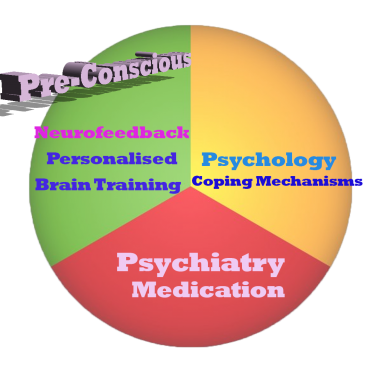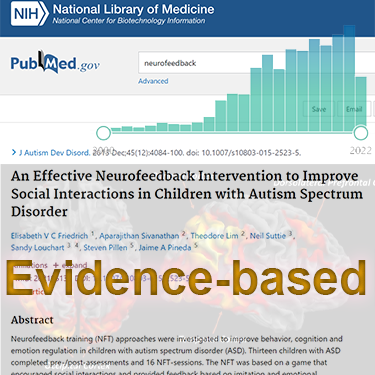Research has confirmed neurofeedback to be a suitable tool for treating patients suffering from vertigo or tinnitus.
Vertigo, dizziness and tinnitus are often linked to inner ear problems, as well as migraines or some medicines.
In cases where medical vestibular treatments are not effective, neurofeedback can provide a complementary therapy – medication-free and non-invasive.

With neurofeedback training we can mature the cortical interpretation of auditory stimuli.
Vertigo and tinnitus are instabilities that usually present with other mental health issues, such as anxiety, impaired sense of self, a feeling of not progressing or loss of social standing, and a particular sensitivity to adversity.
Stress frequently amplifies the symptoms.
Personalised Brain Training takes a holistic approach:
A qEEG brain map lets us detect vulnerabilities beyond auditory dysrhythmia, and we can train these areas using the most advanced neurofeedback protocols devised by founders of the field.

Brain Maps and Personalised Brain Training Explained
Personalised Brain Training with Neurofeedback
Neurofeedback lets us train dysrythmic brain areas. With sensors comfortably fitted to the brain areas we want to train, we detect brainwave patterns real-time while watching a movie. When these patterns are inefficient, the volume drops momentarily. This is the feedback we are giving our brain, short and instantaneously.
The brain area we are training recognises this – while our conscious mind is focussed on the movie – and adjusts its behaviour to restore the normal volume. With repetition, throughout a session, learning occurs.
Meanwhile our conscious mind is solely focussed on the movie; the training process is passive in this sense.
The drop in volume is subtle, so we continue to understand the flow of the movie. No current or electrical stimulation is fed to the brain; sensors simply read brainwaves and the feedback is purely audio-visual.

Neurofeedback trains our Pre-Conscious Mind
Rather than engaging the conscious mind, which slows us down, we are training preconscious processes.
This equips us with the ability to live in the moment and attain our potential (if we have to resort to conscious control, we are not living in the moment).
We take a holistic approach to healthy brain self-regulation, rather than categorisation or diagnosis.
Personalised Brain Training is an advanced qEEG brain map-based approach to neurofeedback training developed by the founders of the field. Taking Othmer Method / ILF training methods further, it employs Default Network Training protocols as developed by David Kaiser.

Neurofeedback is Evidence-based
Neurofeedback training is an evidence-based complementary therapy. Its efficacy was first demonstrated some 50 years ago, and with advances in technology, training protocols have become more efficient and the feedback method – watching movies – thoroughly enjoyable.
Neurofeedback is evidence-based. It’s first application was discovered in 1971 when it was used to resolve intractable epilepsy.
There are over 2,000 peer-reviewed research reports on PubMed demonstrating efficacy across a number of pathologies.
In the US, it is an accepted complementary treatment for many challenges.